Properly heating bathrooms is essential due to the presence of water, making it crucial to explore safe and effective heating methods for a comfortable living environment.
Bathroom heaters need to be effective yet be safe from the risk of burns and problems caused by the coming together of water and electricity, such as electrocution and fire. Many people use heated towel rails and underfloor heating for their bathrooms.
Read on to discover more about bathroom hazards and learn safe methods to heat your bathroom effectively.
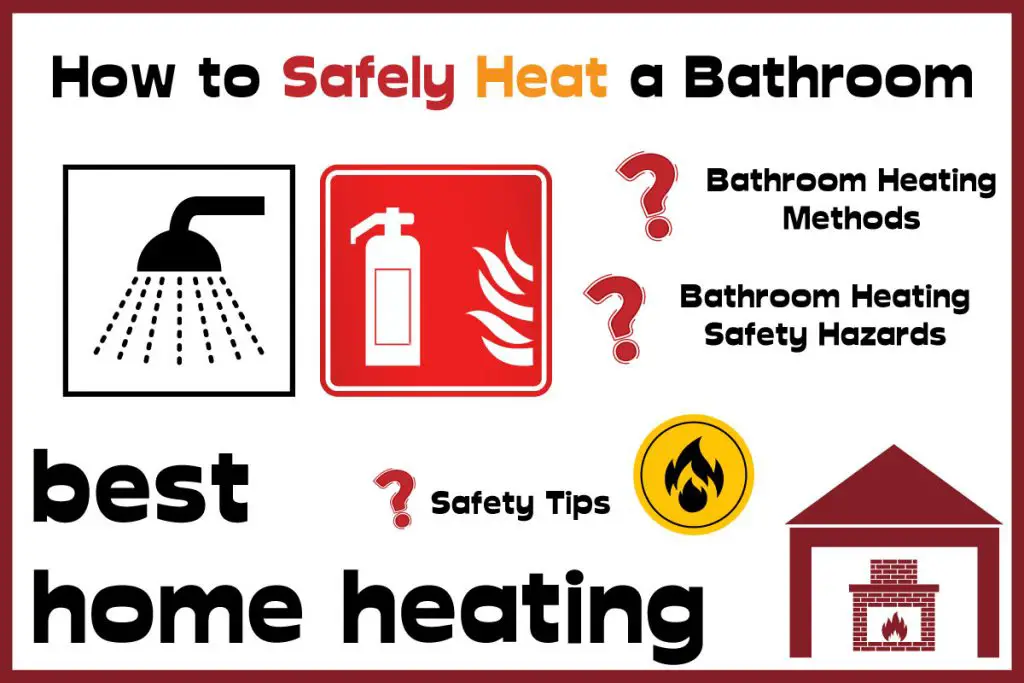
Bathroom Heating Hazards
Before considering installing a heating system in your bathroom, one must understand the downside to whatever system they plan to install. They include the following:
Short-circuiting
Wall Heaters, Ceiling Heater, and underfloor heating systems require professional installation. This is because the wiring setup is quite tricky and a wrong connection could trip the home’s entire circuit breaker. Also, connecting your space heater to a circuit breaker with a low power rating would trip your home’s power supply or burn the connecting wires. This is why you need to have in-depth knowledge of electrical wiring before you try to install these particular systems.
Burns
Heated Towel rails can get hot enough to cause skin burns. Accidental skin contact with these rails can cause severe burns for people who have sensitive skin. As a result, ensure that the towel rails are situated in strategic areas away from the bathroom’s pathway.

Carbon monoxide from Gas heaters
Most gas heaters are likely to leak Carbon Monoxide(CO) as they age, newer ones are not left out as well. Poor bathroom ventilation or a faulty flue could also lead to carbon monoxide poisoning. If you own a gas heater, you would need to regularly service them.
This is because Carbon monoxide has no smell or color. So if you have a leaking gas heater you may not detect it immediately. People might faint or even pass out when there are high quantities of carbon monoxide in the air. The following individuals are more vulnerable to air contaminants, such as carbon monoxide: kids, pregnant women, their unborn offspring, and elderly people.
Hazard to Pets and Kids
Although they may provide comfort for pets, bathroom heaters can be harmful. Our furry companions not only run the risk of overheating or burning their fur and skin from laying on bathroom floors with underfloor heating(thermal blocking). They also run the risk of carbon monoxide poisoning and smoke inhalation from gas heaters.
Also, never leave kids unsupervised in bathrooms with portable heaters or wall heaters. Children are quite inquisitive and may want to explore the nitty-gritty behind the heater and run the risk of getting burns or in severe cases electrocuted. Underfloor heating is much more suited to kids, even with their sensitive skin.
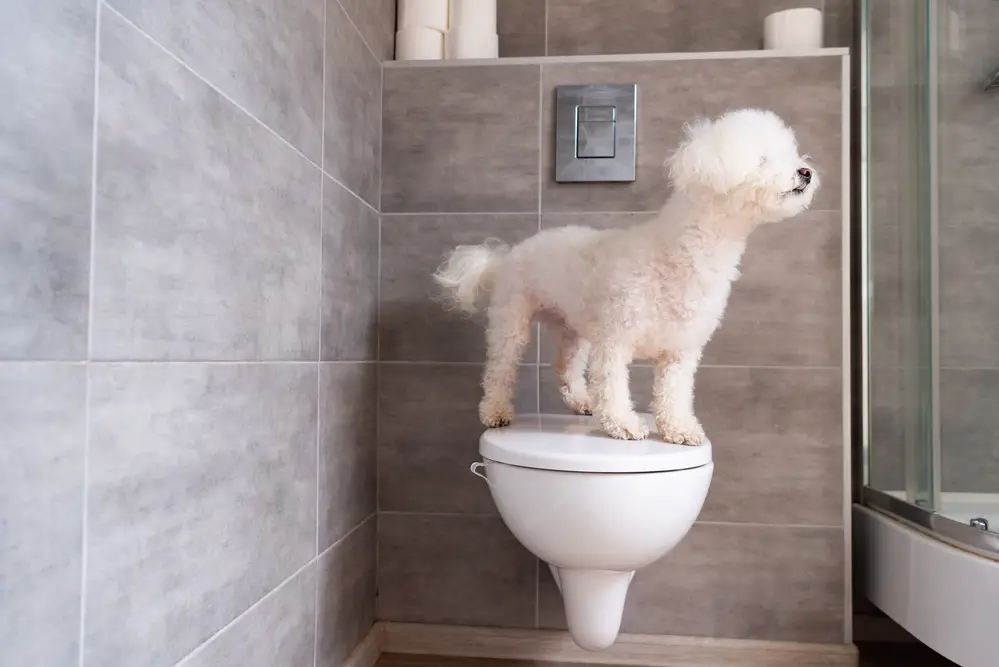
Electrocution
This is the commonest hazard associated with Bathroom heaters. Portable heaters and wall heaters are the major causes of electrocution.
Portable heaters have a history of accidental electrocution that has claimed the lives of quite a number of people. Since these portable heaters are quite handy and one can easily move them about, people tend to place them anywhere they deem fit. So many situations have occurred whereby, due to the wrong placement of these heaters, they come in contact with the shower water of the person in the bathroom.
Wall heaters require a certain level of expertise to install them. So it is best left for professionals to install them. This is to prevent situations whereby there are loose wires or poorly connected hanging about in the bathroom. Slight contact with someone’s wet skin could compromise the individual’s body permanently.
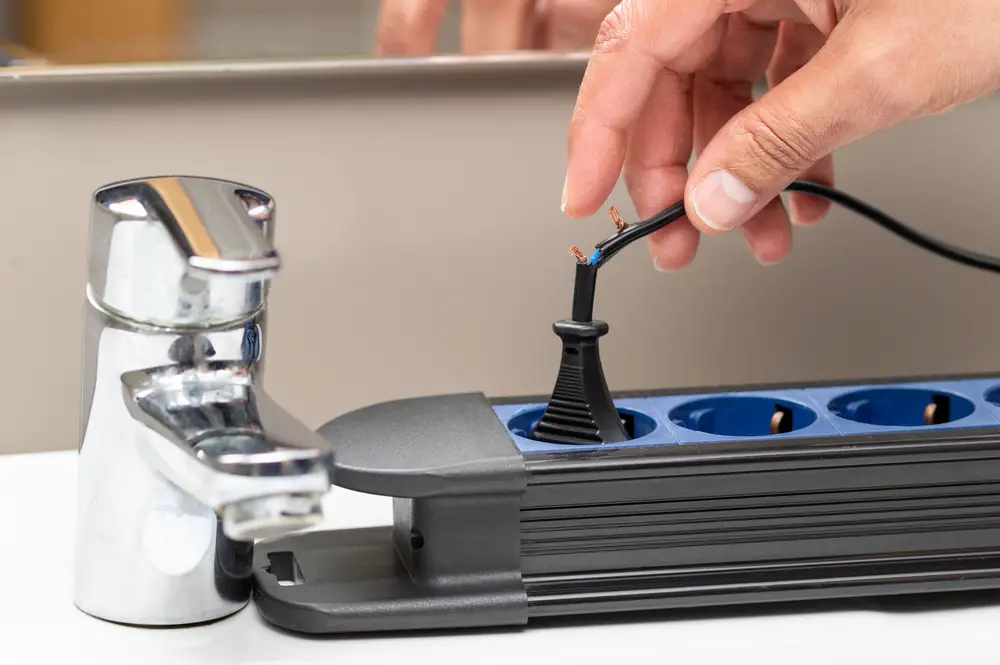
Damage to property
Portable electric heaters are also susceptible to fire outbreaks, which could also lead to damage to properties. These heaters do not fair well when placed close to combustible elements, like shower curtains. Research from the Consumer Product Safety Commission has stipulated that portable electric heaters cause over 1000 fire outbreaks yearly.
Methods of Heating a Bathroom
The following is a list of heating systems for your bathroom:
Electrically heated towel rack.
In addition to drying and fluffing your towels, an electrically heated towel rack, also known as a heated towel rail, may give some warmth to a tiny bathroom. Although designed to be an appealing addition to the area and are frequently permanent fixtures, these devices are less effective than other types of heating. They work by heating coils inside the tube and radiating heat outward, much like space heaters do. They can be left on constantly to bypass the warm-up period (5–30 minutes), although doing so raises the cost of operation. Towel racks are typically activated by a switch. The towel rack itself is where most of the warmth is.
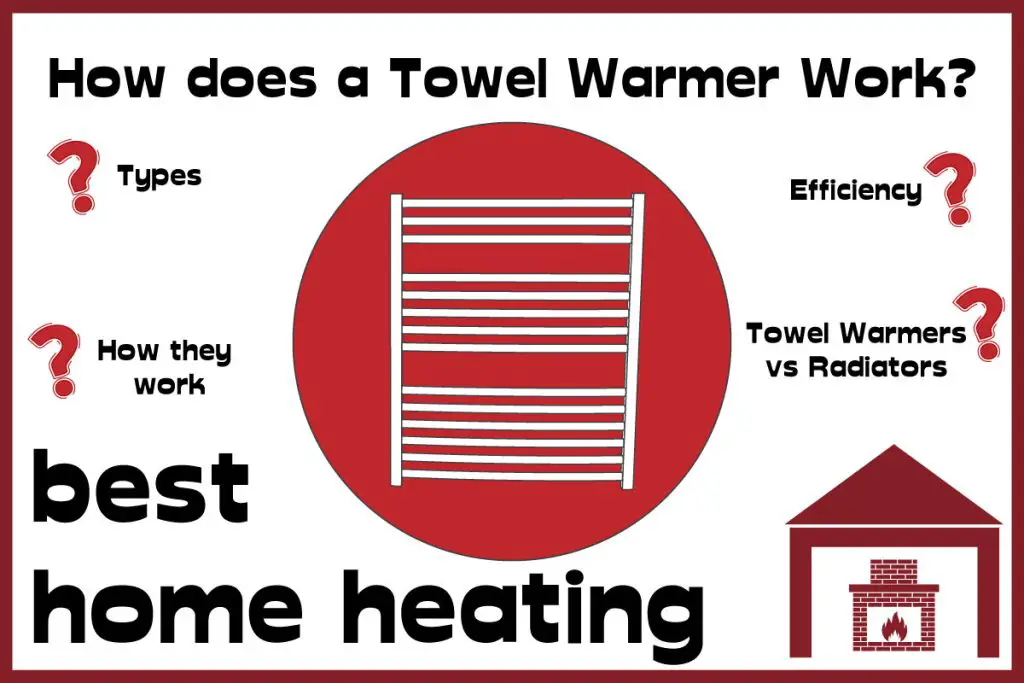
How safe is an Electrically heated towel rack?
Towel racks are very safe to use in the bathroom, but like any other equipment, if you do not handle them properly you may hurt yourself. When installing your Towel Rack, ensure it is far from your bathtub or shower. Electricity and water do not go hand-in-hand, hence you should avoid getting them in contact with each other. This is to prevent electrocution or a short circuit. The recommended distance between your socket outlet and the shower should be at least 3m.
For better safety measures to prevent electrocution, ensure that the socket is controlled by a pull cord or a switch placed outside the bathroom. Also, there is a possibility of getting accidental burns when walking past them.
Radiant floor heating
When you want to evenly distribute heat throughout the whole bathroom, from the floor up, radiant floor heating is a great choice. The heat source is hidden beneath the floor, out of sight, and works more effectively than the majority of alternatives. Hot water or electricity might be the source. It is a great option for remodeling.
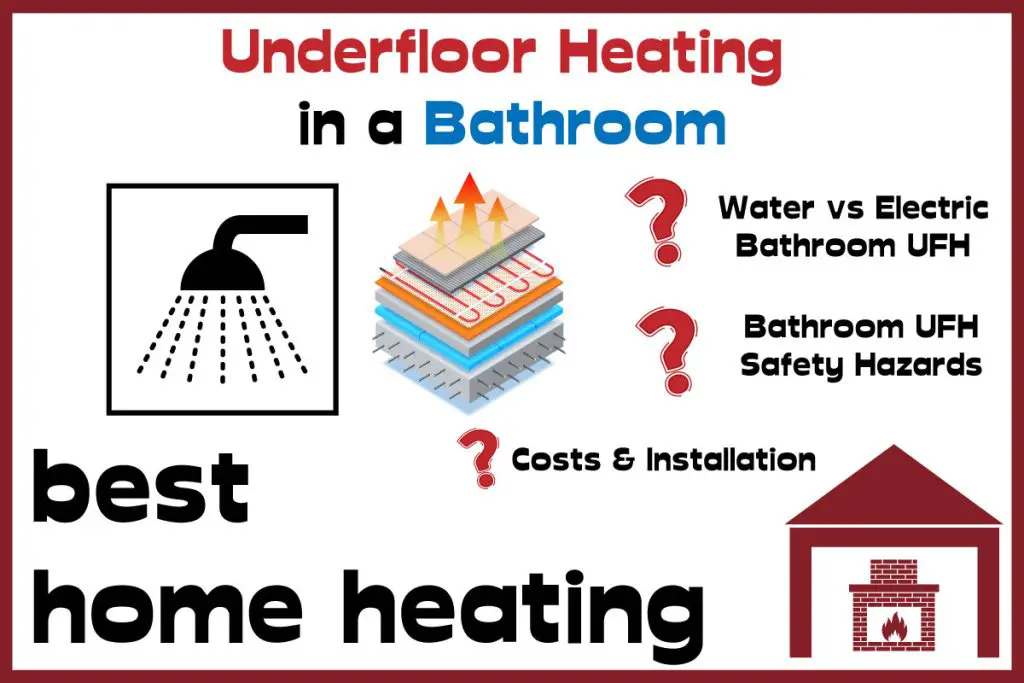
How safe is Radiant floor heating?
This is the safest heating system for your bathroom. Radiant floor heating is properly fitted directly under the ground free of human contact. There isn’t much fire risk with hot water systems except only in the most extreme situations.
With electric radiant floor systems, you must take safety precautions. Nothing should be drilled or nailed into the floor. This might harm the wires, resulting in a short circuit, or cause the system to crash. Prevent placing bean bag chairs, animal beds, carpets, or mattresses on the floor since they may impede airflow and result in hot patches. For the same reason, Never use flat-bottomed furniture.
Portable Heaters
As the name implies, these heaters are very portable and easy to move about. This heater is majorly for people who do not have enough or do not want to spend too much on Bathroom heating. These types of people typically want to heat their bathrooms during the cold season. These heaters are easily moveable and can be taken out to heat other rooms. Portable heaters are electrically powered, with the power source heating the heating element inside.
How safe are Portable Heaters?
The safety of portable heaters depends on their type / fuel source and whether you are careful. There were certain instances in the past when the US government instructed people not to make use of them in their bathrooms. This was due to the rising fatalities which occurred in the bathroom.
In most cases, the victims placed the portable heater too close to the bathtub or shower, which came in contact with water (more information here).
Hence, avoid placing portable heaters close to your shower. You must always be wary of mixing water and electricity.

Wall Heaters
Similar to space heaters, electric wall heaters are often installed permanently. Depending on your bathroom’s heating needs, they may be 120 or 240 volts, and a certified electrician should install them. It will affordably boost the heat in your bathroom and is installed on the wall. Thermostat controls and timers are features found in the majority of models. These heaters are spot heaters, therefore to give sufficient heat at the other end of the room, you frequently need to overheat the space where the wall heater is situated.
An electric radiator in your bathroom saves electricity. You don’t need to make a large investment or make any big structural changes. The setup is very quick and simple.
How safe are wall heaters?
Electric heating is sometimes seen as harmful, however, this is not the case. Over the last few years, electric equipment has progressed greatly, and the risk of overheating or electrocution has been eliminated. Because there is no combustion process, there is no risk of CO poisoning with electric heating in the bathroom. As a result, you may relax and enjoy the heat in your bathroom without concern.
It is common knowledge that water and electricity should not be combined. As a result, you should exercise caution and keep your electric heater a safe distance away from the shower. Check the applicable safety recommendations for setting electric radiators to be sure. You do not need to take any further measures. Also, installing a wall heater is quite complicated and should be left for only qualified professionals. Upon completing the installation, ensure that there are no loose wires, this is to prevent accidental electrocution when walking past them.
Conclusion – Main safety considerations when heating a bathroom
Bathrooms are unusual when it comes to heating a space since they are susceptible to cold in the fall and winter months. When you include in the increased humidity, damp towels, and cold tile flooring, what should be a relaxing experience may turn into a race to get the hot water in the shower before your teeth start chattering from the cold.
Before utilizing an electric heater, you must first confirm that your bathroom has ground-fault circuit interrupter (GFCI) outlets. If there are tiny current fluctuations, these safety outlets will instantly off the power. So, they safeguard you if your space heater malfunctions.
In this article, we have shared with you some of the best ways to safely heat your bathroom and outlined the safety hazards, different heating systems can pose.
